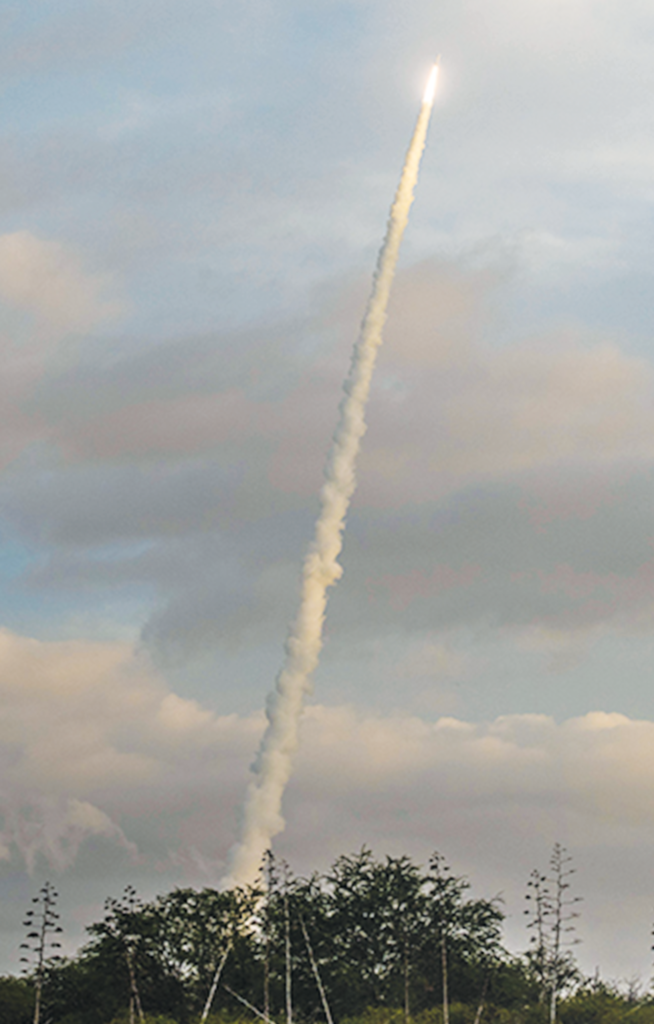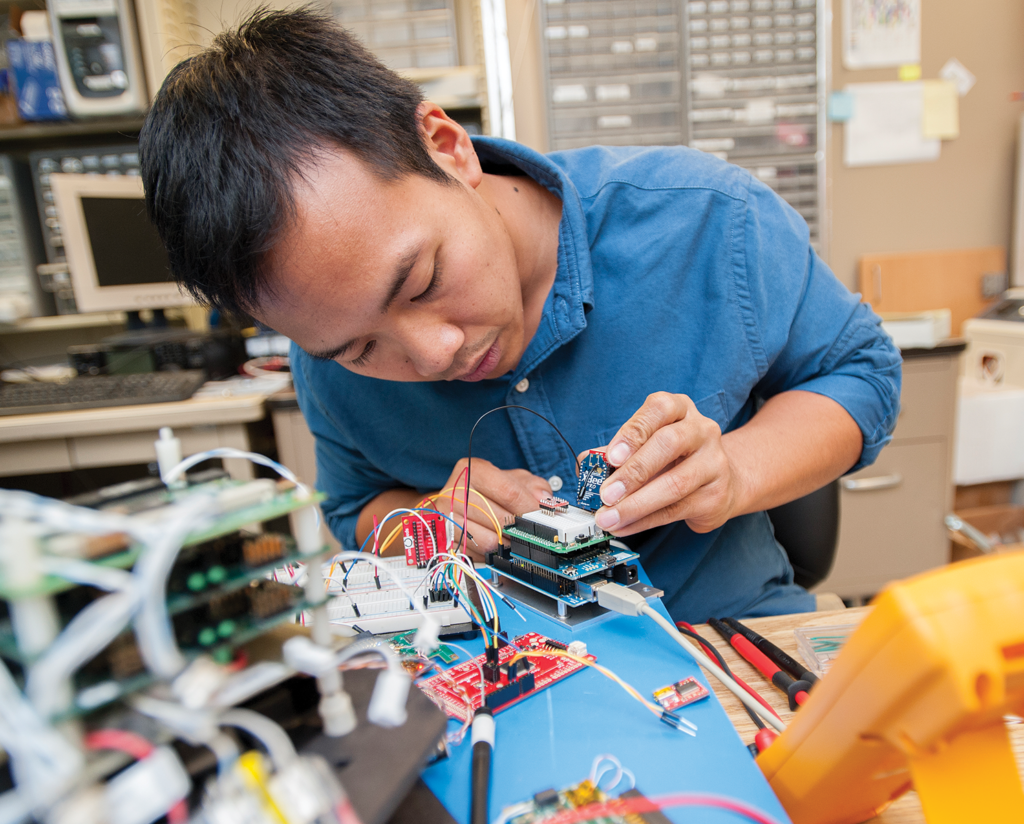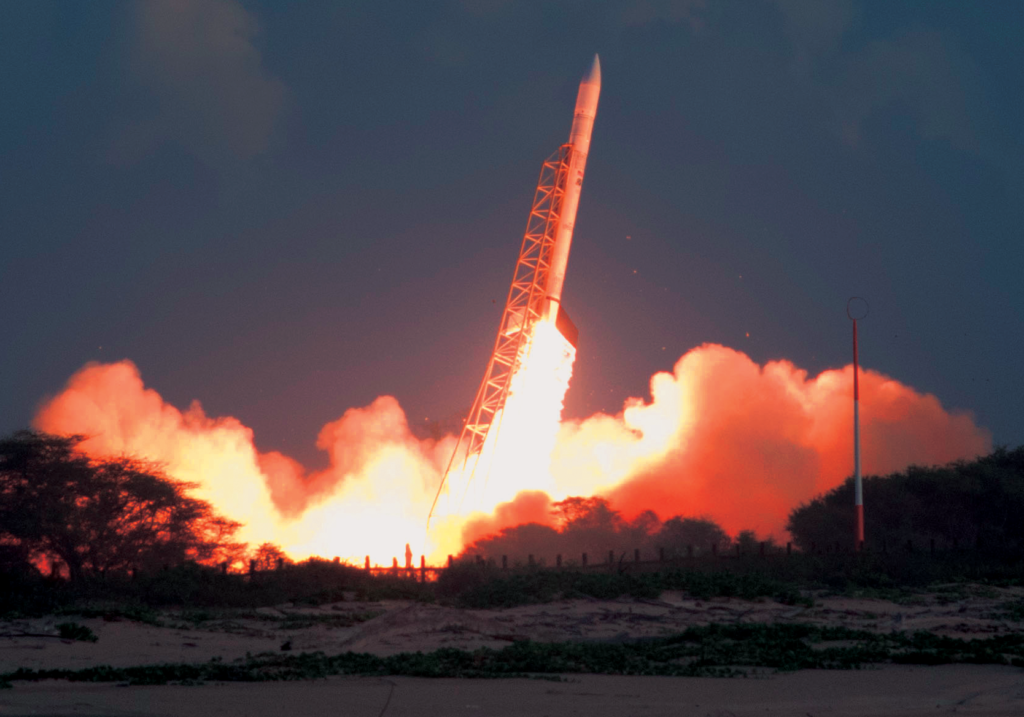Space Programs at UH
“Space is hard — but worth it…” is what British billionaire Richard Branson said after the loss of his Virgin Galactic SpaceShipTwo during a test flight in 2014.
Space is indeed hard as faculty and students of the University of Hawai‘i’s Hawai‘i Space Flight Laboratory (HSFL) experienced this first-hand during Hawai‘i’s first space launch last November. Shortly after liftoff, the experimental Super Strypi rocket experienced an anomaly that destroyed the spacecraft. Known as the ORS-4 mission, it was sponsored by the Operationally Responsive Space Office (ORS) in collaboration with UH and the Pacific Missile Range Facility at Barking Sands, Kaua‘i, and served as a test for a quick, low-cost rail-launched system for small satellites.

According to HSFL Director Luke Flynn, the University of Hawai‘i and the state are now considered players in the aerospace industry in spite of the unsuccessful launch.
“It proved that UH has the equipment and expertise to build and test small spacecraft,” said Flynn. “HSFL has clean-room facilities and small-satellite test equipment to fully train the next generation of small-satellite engineers.”
HSFL designed and constructed the primary payload for the mission, the hyperspectral imaging aeronautical kinematic analysis satellite, called HIAKA—which also means “to recite legends or fabulous stories” in Hawaiian. More than 150 UH students gained real world experience building the sophisticated satellite that passed a rigorous NASA-based testing process before it was approved for a space launch.
Because of this project, Hawai‘i now has a rocket launch pad and a rail launcher at PMRF that are critical assets for future space launches, as well as established satellite tracking stations in place at Kaua‘i Community College and Honolulu Community College that have been fielding requests from commercial agencies for data downlink services.
“HSFL received two commercial queries regarding use of the launcher (at PMRF) after the mission,” said Flynn, adding that private sector interest in deploying small satellites for lower costs is very high. “It’s been reported that SpaceX alone wants to send up 4,000 small communications satellites in the future. Certainly, the number of launches and launch sites in the U.S. and abroad will have to grow to meet this demand.”
Established in 2007 within the School of Ocean and Earth Science and Technology and the College of Engineering at the University of Hawai‘i at Mānoa, HSFL has received $29 million in federal funding over the past seven years for the November 2015 launch attempt and invested $2 million in university funds in equipment that is being used to support future small-satellite development across the UH System.
A group of HSFL students are currently working on a suborbital payload launch from New Mexico scheduled for summer 2016. The payload is a new on-board computing system that will be used in future HSFL small satellites.
HSFL is also working on two orbital satellites that will be launched as part of the NASA CubeSat Launch Initiative in 2017. The Neutron-1 satellite will detect neutrons that are incoming to the Earth from space. The GOSTE-1 satellite will measure atmospheric water. The NASA CubeSat Launch Initiative is particularly exciting for HSFL because the program offers free launch services for university CubeSats.


